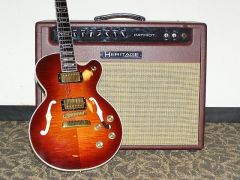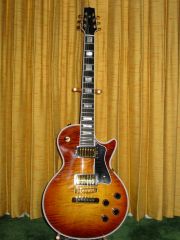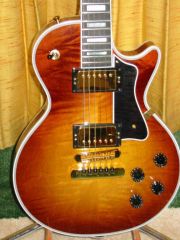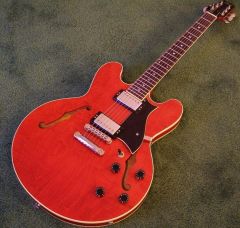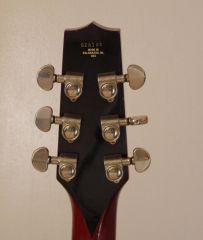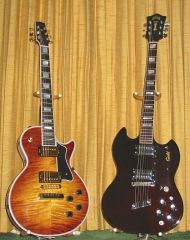-
Posts
2343 -
Joined
-
Last visited
-
Days Won
247
Content Type
Profiles
Forums
Gallery
Blogs
Events
Everything posted by TalismanRich
-
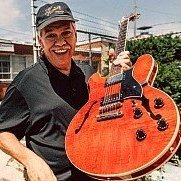
Mini-ZFest - Saturday August 2, in Ann Arbor, Michigan
TalismanRich replied to Jaguarguy's topic in Amplification and Effects
I wish I could stick around, but I'll be heading back to attend a memorial service for a good friend's wife. -
This is a fairly small club. There are mics on the amps, but that's only for the video feed that they use for Facebook. It also appears that the Katana is the house amp along with the bass amp and drum kit. Some acts bring their own amps, but I was looking over a few videos of other groups and they all have the same bass and guitar amps.
-
A friend's band was playing a local club a few months back and I noticed that the harmonica amp was crapping out during the last half of the show. Last night, I saw he had replaced the old Fender with a new tweed Blues Jr. The guitar player also changed amps, going from an old Fender Deluxe to a Boss amp.
-
I got the impression that the "factory special" was a Sweetwater spec'd guitar. The Lollar PAF and jumbo frets vs the CC spec 225 and Medium Jumbos frets. Plain top vs figured top. I would guess they move enough that they could specify a factory run, a bit like Wildwood does with their "Wildwood Spec" guitars.
-
They are all hand sprayed, so every one is different, depending on the way the painter feels on that day. There's no "template". It's free hand.
-
Mark, good to hear from you again. Glad to hear you're enjoying your time. I missed reading your tales (sometimes good, sometimes tales of woe). Should there come a day that you get the bug, you'll surely find some like-minded mates to scratch the itch. Don't stay away so long next time.
-
Lordy Mark, Do you have a black cloud floating somewhere over your head? I remember what it was like when my leg was in a cast for 6 weeks. UGH! Hope you heal up quickly!
-
Wow, you were looking to replace a guitar player, and you end up with a rotation of drummers! That stinks that your man had to bow out because of arthritis. This aging stuff just sneaks up and bites us when we're just having fun. Hopefully the days of drama and drunken spouses are far behind you. Perhaps you can grace us with some videos of the new band.
-
I can't think of a more eloquent way of putting the HOC and PSP in perspective. Yes, this is a hobby for most of us, but the friendships are what make it all worthwhile. Well said!
-

Unhappy Customer looking for an answer from The Heritage team.
TalismanRich commented on Maxime's blog entry in Defaults on a 535 and no answer from Heritage.
You mention the neck/body junction, but I don't see a photo of that joint. Perhaps I am not understanding the nature of the problem. Is the problem only with the binding, or is there a more structural issue with the neck joint? While I personally would not have an issue with the offcenter dots, it clearly is a fault. Your best recourse is to deal with the seller. If he is an authorized dealer, he should act as the bridge between you and the factory. Having modified the guitar with the Bigsby may present a problem. Changing the binding on the neck would be one way to remedy the situation, and I fear that it could result in more visible flaws. The dots are knocked in by hand, so the dot could be drilled out by hand, filled and redrilled for the new dot. -
From the album: TalismanRich
-
From the album: TalismanRich
-
From the album: TalismanRich
-
From the album: TalismanRich
-
From the album: TalismanRich
-
From the album: TalismanRich
-
From the album: TalismanRich
Hollow body sweetness -
From the album: TalismanRich
An outstanding combination. PURE BLUES! -
From the album: TalismanRich
2003 H157 in Almond Burst


















